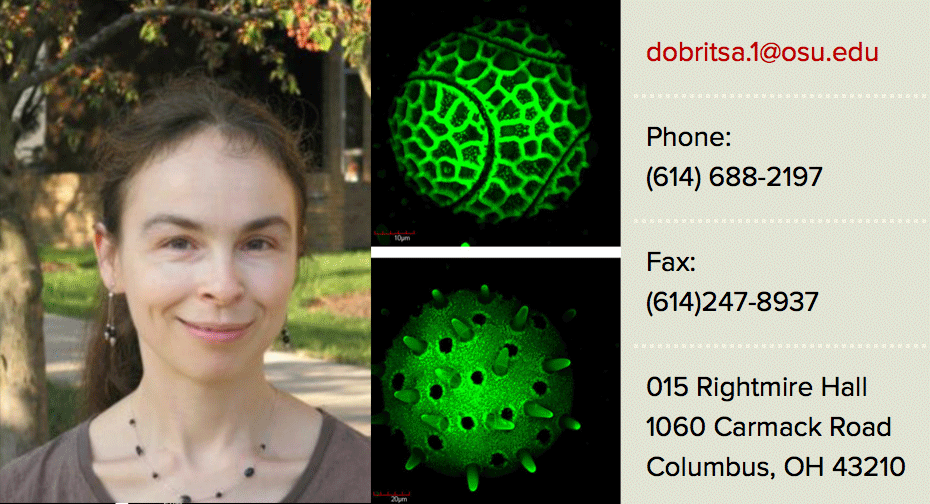博文
Plant Cell:拟南芥三沟型花粉形成机制
||
Arabidopsis protein kinase D6PKL3 is involved in formation of distinct plasma-membrane aperture domains on the pollen surface
First author: Byung Ha Lee; Affiliations: Ohio State University (俄亥俄州立大学): Columbus, USA
Corresponding author: Anna A. Dobritsa
Certain regions on the surfaces of developing pollen grains exhibit very limited deposition of pollen wall exine (花粉壁外壁). These regions give rise to pollen apertures (花粉孔), which are highly diverse in their patterns and specific for individual species. Arabidopsis thaliana pollen develops three equidistant (等距的) longitudinal (纵向的) apertures. The precision of aperture formation suggests that, to create them, pollen employs robust mechanisms that generate distinct cellular domains. To identify players involved in this mechanism, we screened natural Arabidopsis accessions and discovered one accession, Martuba, whose apertures form abnormally due to the disruption of the protein kinase D6PKL3. During pollen development, D6PKL3 accumulates at the three plasma membrane domains underlying future aperture sites. Both D6PKL3 localization and aperture formation require kinase activity. Proper D6PKL3 localization is also dependent on a polybasic (多碱基的) motif for phosphoinositide (磷酸肌醇) interactions, and we identified two phosphoinositides that are specifically enriched at the future aperture sites. The other known aperture factor, INAPERTURATE POLLEN1, fails to aggregate (聚集) at the aperture sites in d6pkl3 mutants, changes its localization when D6PKL3 is mislocalized (错位), and in turn, affects D6PKL3 localization. The discovery of aperture factors provides important insights into the mechanisms cells utilize to generate distinct membrane domains, develop cell polarity, and pattern their surfaces.
p.s. 同期评论文章:Natural Artist: How a Protein Kinase Helps Sculpt the Pollen Grain Surface From the Inside Out (https://doi.org/10.1105/tpc.18.00647)
发育中的花粉粒表面的某些区域会对花粉壁外壁的沉积存在一定的限制。这些区域会逐步发育成为花粉孔结构,这是一种在不同个植物物种具有不同模式和特异性的结构。拟南芥的花粉具有三条等距间隔的纵向花粉孔。花粉孔的精细结构预示着一定存在某种精细调控机制来控制花粉孔表面不同区域的结构建成。为了鉴定参与花粉孔发育的基因,作者进行了拟南芥突变体扫描,结果鉴定到了一个Martuba突变体,该突变体花粉孔的发育异常是由于蛋白激酶D6PKL3的表达缺陷。在花粉发育过程中,D6PKL3特异性在未来形成花粉孔的三个区域积累。D6PKL3定位和花粉孔的行程均需要激酶活性。D6PKL3的正确定位同样依赖于一个多碱基基序,该基序作用于与磷酸肌醇的互作,作者还鉴定到了两个磷酸肌醇特异性在未来形成花粉孔的区域积累。另外一个已知与花粉孔形成相关的因子,INAPERTURATE POLLEN1,在d6pkl3突变体中不能在花粉孔的位置聚集,D6PKL3的错位会导致该蛋白的定位错误,反过来又会影响D6PKL3的定位。本文鉴定的花粉孔形成影响因子为我们进一步理解细胞如何通过分子调控机制控制不同膜区域的形成、发育出细胞极性及细胞表明模式提供了新的见解。
通讯:Anna Dobritsa (https://molgen.osu.edu/people/dobritsa.1)
�
�研究方向:孢粉素的生物合成;花粉粒外壁的发育。
doi: https://doi.org/10.1105/tpc.18.00442
Journal: Plant Cell
First Published: 27 August, 2018
(P.S. 原文下载:链接:https://pan.baidu.com/s/1qFiSsqwlF_7JjmGMbedfhQ 密码:dmu6)
https://blog.sciencenet.cn/blog-3158122-1131824.html
上一篇:Plant Physiology:苹果花青素生物合成分子调控机制
下一篇:New Phytologist:水杨酸参与杨树对锈菌侵染抗性的调控
全部作者的其他最新博文
- • Plant Physiology:CsMADS3促进柑果中的叶绿素降解和类胡萝卜素合成(华中农业大学)
- • Molecular Plant:LBD11-ROS反馈调节作用于拟南芥的维管形成层增殖和次生生长(浦项科技大学)
- • Science Advances:根结线虫通过调控植物的CLE3-CLV1模块,促进侵染进程(日本熊本大学)
- • Nature Communications:油菜素内酯参与植物营养生长期转变的分子机制解析(浙江农林大学)
- • Current Biology:光合作用产生的蔗糖驱动侧根“生物钟”(德国弗莱堡大学)
- • PNAS:花同源异型基因在叶中被抑制、花中被激活的分子机制(南卡罗来纳大学)


